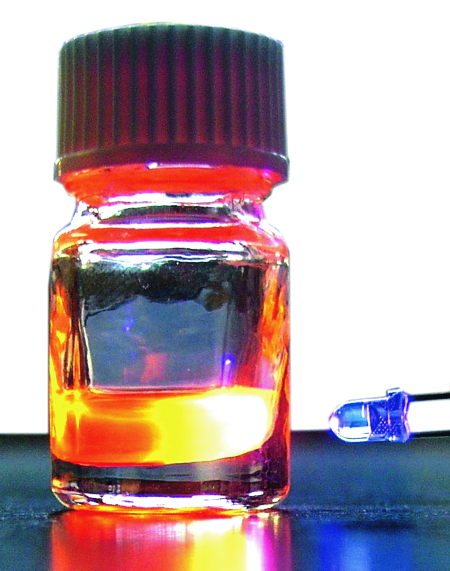This type of sensor is based on the fluorescence decay of nanocrystals. The decay time,
i.e. the time it takes for optically excited electrons to return to their ground state, depends strongly on temperature between 4 and 40 K.
In our laboratory, we produces CdSe nanocrystals surrounded by a double shell of CdS and ZnS, whose fluorescence yield is the highest in the world. They are also very photostable. Their decay time was measured in the laboratory in the range 7-40 K for different excitation frequencies (see Figure).
In practice, the nanocrystals are mixed with PMMA (plexiglas) and deposited in layers onto the tip of the optical fiber. With this kind of device remote measurements are possible, even without contact, and are insensitive to the magnetic field (at least up to 7 Tesla) or to electromagnetic interference. A patent was filed.
Further reading: Patent FR2959308 (2011)

Fluorescence decay time of CdSe/CdS/ZnS nanocrystals as a function of temperature.
Orange fluorescence of nanocrystals excited by a blue diode.